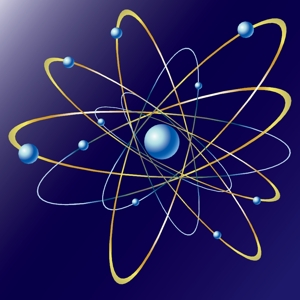Stephen R Rowland
from Baltimore, MD
Stephen Rowland Phones & Addresses
- 704 33Rd St, Baltimore, MD 21211 • 4102353126
Industries
Food & Beverages
Resumes

Southeastern Regional Manager-Pasternak Wine Imports
view sourceLocation:
Baltimore, Maryland Area
Industry:
Food & Beverages
Us Patents
-
Shallow Metallic S-Seal
view source -
US Patent:7004478, Feb 28, 2006
-
Filed:Dec 7, 2001
-
Appl. No.:10/005178
-
Inventors:John Loyd Spence - Severna Park MD, US
Stephen B. Rowland - Laurel MD, US -
Assignee:PerkinElmer Inc. - Wellesley MA
-
International Classification:F16J 15/02
-
US Classification:277644, 277626
-
Abstract:A metallic seal is provided that concentrates the available load over a narrow band to produce a sealing dam over a sufficient width to minimize leakage on a molecular level. The metallic seal has a first annular end section with has a first annular sealing surface, a second annular end section with a second annular sealing surface and an annular center section extending between the first and second annular end sections to form a ring having a central passageway with a center longitudinal axis. The third annular section is frustoconical tube with the first and second annular end sections being contiguously arranged at opposite ends of the annular center section such that sealing loads applied substantially perpendicularly on the first and second annular sealing surfaces primarily deform due to torsional stress of the metallic seal.
-
Pressure Energized Metallic Seal
view source -
US Patent:7100925, Sep 5, 2006
-
Filed:Jul 31, 2003
-
Appl. No.:10/630779
-
Inventors:Jeffrey Swensen - Eldersburg MD, US
Stephen Rowland - Laurel MD, US -
Assignee:Perkin Elmer, Inc. - Wellesley MA
-
International Classification:F16J 15/02
B21D 53/84 -
US Classification:277644, 277647, 277626, 298883
-
Abstract:A pressure-energized, annular metallic seal is provided that includes a central annular portion and a pair of annular leg portions extending from the central portion. Each leg portion includes a convex sealing surface lying in sealing plane. One of the leg portions preferably has an annular flange offset from its sealing plane in an axial direction towards the sealing plane of the other leg portion. One of the leg portions preferably has at least one radially extending tab projecting further than adjacent parts of the seal. The seal is preferably manufactured by first cutting a first annular edge in a metallic sheet material, then bending the sheet material substantially into the shape of the seal, and then cutting a second annular edge to complete the shape of the seal. The second annular edge preferably defines the annular flange and/or the at least one tab.
-
Pressure Energized Metallic Seal
view source -
US Patent:7866040, Jan 11, 2011
-
Filed:Mar 31, 2006
-
Appl. No.:11/393828
-
Inventors:Jeffrey Swensen - Eldersburg MD, US
Stephen Rowland - Laurel MD, US -
Assignee:Eaton Corporation - Cleveland OH
-
International Classification:B21D 53/84
-
US Classification:298883, 277647
-
Abstract:A pressure-energized, annular metallic seal is provided that includes a central annular portion and a pair of annular leg portions extending from the central portion. Each leg portion includes a convex sealing surface lying in sealing plane. One of the leg portions preferably has an annular flange offset from its sealing plane in an axial direction towards the sealing plane of the other leg portion. One of the leg portions preferably has at least one radially extending tab projecting further than adjacent parts of the seal. The seal is preferably manufactured by first cutting a first annular edge in a metallic sheet material, then bending the sheet material substantially into the shape of the seal, and then cutting a second annular edge to complete the shape of the seal. The second annular edge preferably defines the annular flange and/or the at least one tab.
-
High Energy Plating Process For Static Seals
view source -
US Patent:20050145501, Jul 7, 2005
-
Filed:Dec 31, 2003
-
Appl. No.:10/748289
-
Inventors:William Bendik - Laurel MD, US
Donald Johnson - Laurel MD, US
Stephen Rowland - Laurel MD, US
Mark Higgins - Silver Spring MD, US -
Assignee:PerkinElmer, Inc. - Wellesley MA
-
International Classification:C25D005/00
C25D007/00 -
US Classification:205137000, 205145000
-
Abstract:There is disclosed a plating process that involves the application of a soft metallic coating, composed of substantially pure metal or alloy, to resilient metal seals utilizing a high-volume, high-energy electro-deposition plating process. The process basically includes supporting a predetermined quantity of metallic seals at non-sealing surface locations with the metallic seals disposed in series on a conveyor having a predetermined processing path, and continuously moving the seals in series through an electro-plating stage of the processing path to electro-deposit a metallic coating on the seals using a high current density and a high chemical flow rate. The seals of this process are applicable to any application or industry where a large quantity of high vacuum/high purity seals are required and where traditional electro-deposition processes would not yield a sufficient quantity of finished parts or would not produce them at an acceptable cost.
Googleplus

Stephen Rowland

Stephen Rowland

Stephen Rowland

Stephen Rowland

Stephen Rowland

Stephen Rowland

Stephen Rowland

Stephen Rowland

Rowland Stephen
view source
Stephen Rowland
view source
Stephen Rowland
view source
Stephen Rowland
view source
Stephen Rowland
view source
Stephen Rowland
view source
Stephen Rowland
view source
Stephen Rowland
view sourceClassmates

Stephen Rowland
view sourceSchools:
Harvest Christian Academy Watauga TX 2001-2005
Community:
Brandon Reese, Ambrea Allen

Stephen Rowland
view sourceSchools:
Johnson County Elementary School Wrightsville GA 1958-1962, Hains Elementary School Augusta GA 1962-1966, Sego Middle School Augusta GA 1966-1968
Community:
Sharon Barker, Pat Gunter, Tony Parris

Stephen Rowland
view sourceSchools:
Knoxville High School Knoxville IL 1978-1982
Community:
Rodney Upp

Stephen Rowland
view sourceSchools:
Stanberry High School Stanberry MO 1964-1968
Community:
Randall Hall, Bob Popplewell, Steven Wiederholt, Galen Stockton, Earl Arnold, David Miller, Carol Giffin, Barbara Rich, Judy Toombs, Sheryl Anderson

Stephen Rowland
view sourceSchools:
Arcadia Valley High School Ironton MO 1986-1990
Community:
Lonnie Brooks, Marvin Watson, Roy Whited

Sego Middle School, Augus...
view sourceGraduates:
Stephen Rowland (1966-1968),
Raina Miller (1982-1983),
Chakia Parks (1998-2001),
Luis Sanchez (2000-2001),
Lataisha Hill (2000-2002),
Suzann Jackson (1980-1981)
Raina Miller (1982-1983),
Chakia Parks (1998-2001),
Luis Sanchez (2000-2001),
Lataisha Hill (2000-2002),
Suzann Jackson (1980-1981)

Harvest Christian Academy...
view sourceGraduates:
Robert Adam Patterson (1997-2001),
John Snow (1985-1989),
Stephanie Bothe (1998-2002),
Stephen Rowland (2001-2005)
John Snow (1985-1989),
Stephanie Bothe (1998-2002),
Stephen Rowland (2001-2005)

Jermantown Elementary Sch...
view sourceGraduates:
Steve Rowland (1961-1968),
John Butorac (1959-1962),
Jennifer Barton (1980-1985),
Darlene Conley (1969-1974),
Stacey Bureman (1981-1983)
John Butorac (1959-1962),
Jennifer Barton (1980-1985),
Darlene Conley (1969-1974),
Stacey Bureman (1981-1983)
Youtube
Myspace
Flickr
Get Report for Stephen R Rowland from Baltimore, MD




















